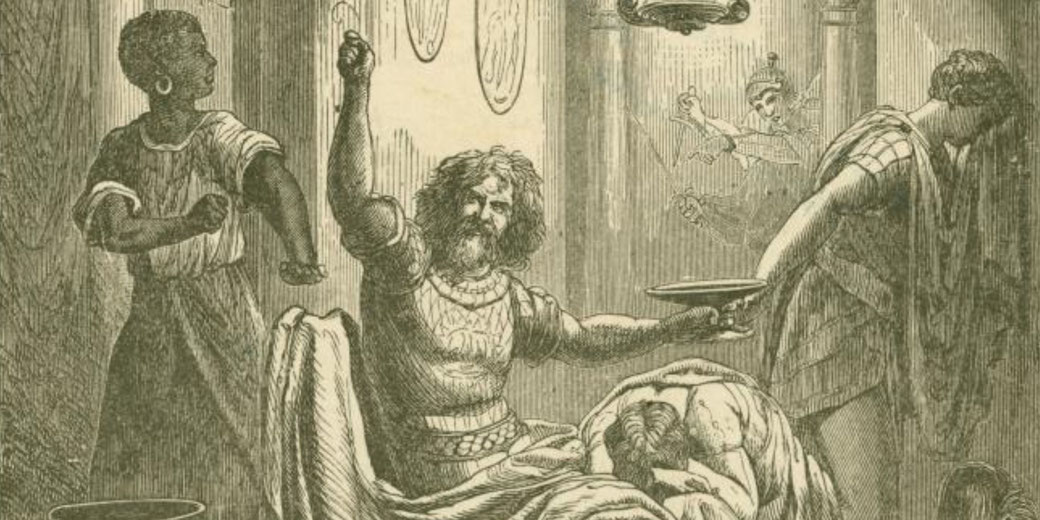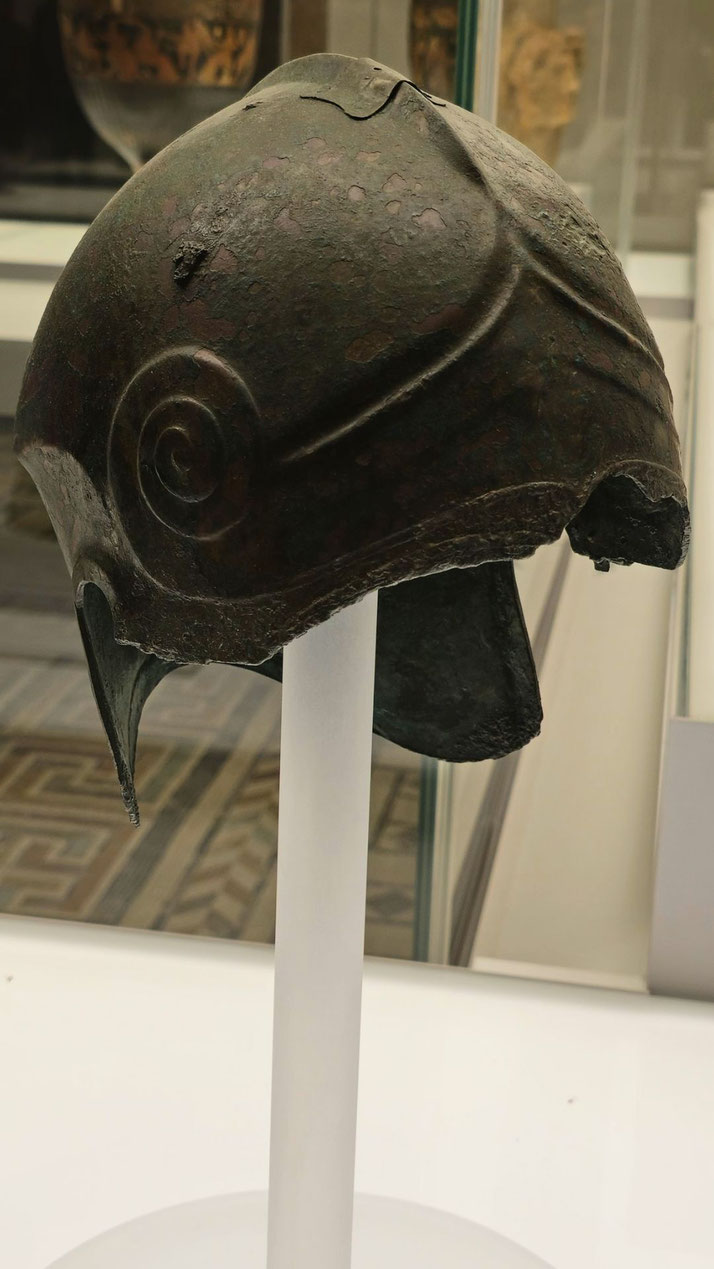What happened to Hannibal after he was defeated by Rome?

In 202 BC, the Battle of Zama brought the Second Punic War to an end, with Hannibal Barca suffering defeat at the hands of Publius Cornelius Scipio.
Although his campaigns had shaken the Roman Republic for over a decade, his loss began a wandering and uncertain final chapter.
What followed combined political reforms that restored fiscal discipline with diplomatic moves that alarmed Rome and drove many of his opponents into exile, and these developments kept him in conflict with Rome until his final breath.
Hannibal's disaster at Zama
The final confrontation took place in late October 202 BC near Zama Regia.
Hannibal had returned from Italy after he had campaigned for fifteen years and led an army made up of inexperienced conscripts, foreign mercenaries, and a core of seasoned veterans.
Many of the new recruits had not fought under his command before and lacked the training needed for a battle against Roman legions.
Ancient estimates vary, but Livy suggests Hannibal commanded about 36,000 infantry and 4,000 cavalry, while Scipio had around 29,000 infantry and 6,100 cavalry.
Scipio had studied Hannibal’s methods and had anticipated the use of war elephants, so he arranged his forces into lanes.
According to Roman sources, this allowed the animals to pass harmlessly through the Roman lines, where they were quickly driven off.
He also positioned velites at the front and relied on the discipline of the principes and triarii behind them to absorb the Carthaginian assault.
As the infantry lines clashed, the Roman soldiers maintained formation and slowly pushed back their Carthaginian counterparts.
Eventually, Hannibal’s line collapsed under the weight of Roman pressure.
Then, Masinissa, who was the Numidian king allied with Rome, brought his cavalry in from the flanks to complete the encirclement.
Carthage, defeated and exhausted, had no choice but to accept harsh terms. The treaty stripped Carthage of its overseas possessions, required annual payments of 200 talents over fifty years, and banned any military action without Roman approval.
Hannibal survived the battle but returned to his city under the shadow of failure and Roman surveillance.

Hannibal's Return to Carthage
However, Hannibal did not return to private life. In 196 BC, he was elected suffet, the highest office in Carthaginian politics. P
revious holders of the title had wielded little power, but Hannibal used it to reshape the state, as he revived the office from its ceremonial role and assumed a role that was equivalent to a Roman consul.
He focused on financial reform and exposed the corruption of the merchant class who had mismanaged public funds during the war.
He had restructured the tax system and had redirected funds to repay the Roman war payments.
As a result, Carthage had begun to make payments ahead of schedule. This alarmed Roman senators, who feared that economic recovery might restore Carthaginian strength.
Also, Hannibal had won support from ordinary citizens, who viewed him as a defender of fairness and efficiency.
In addition, his reforms earned him powerful enemies among the ruling aristocracy, as they resented his interference and feared Roman retaliation.
Among his opponents were members of the Hundred and Four, the ruling council that had long dominated Carthaginian politics.
By 195 BC, Rome had sent a delegation to Carthage to investigate. The Senate, which was prompted by Titus Quinctius Flamininus, accused Hannibal of secret dealings with other states.
Once he had realised that Carthage would not protect him, he fled before Roman agents could arrest him.
Exile and Flight from Carthage
Hannibal had sailed east under cover of darkness, had arrived first at Tyre and then Ephesus, and had avoided major ports that Roman allies might use to report his presence.
Eventually, he took shelter at the court of King Antiochus III of the Seleucid Empire.
The king welcomed him with caution and valued his reputation, but he gave him little real power.
However, Roman agents had followed closely behind and every city Hannibal visited became a source of intelligence and speculation.
Also, informers loyal to Rome spread rumours about his intentions. His movements became limited by fear that any host could face war or economic penalties if they harboured him.
He could not return to Carthage, which remained under close Roman watch.
Instead, he stayed in foreign lands and accepted the protection of kings who needed his advice but did not fully trust him.
His name still carried weight, and Roman officials understood that even in exile, Hannibal continued to pose a danger.
Service to the Seleucid Empire
At Antiochus’s court, Hannibal proposed a plan to invade Italy, which he believed would distract Rome and reduce pressure on the eastern Mediterranean.
The king, however, refused. He had already committed to a strategy of defence in Asia Minor and hoped to control Greece without provoking a Roman invasion.
Earlier defeats, including the loss at Thermopylae in 191 BC, had already weakened the Seleucid position.
Hannibal had accepted a naval command but had limited resources and he is said to have prepared a fleet near Cilicia and trained local crews, though no ancient source confirms that he took part in major combat.
By then, the Seleucid forces had already begun to falter. Roman forces advanced, and Antiochus suffered a major defeat at the Battle of Magnesia in 190 BC.
Scipio Asiaticus and his brother Lucius Cornelius Scipio led the Roman army during this campaign, which extended Roman authority further east.
As part of the peace terms, Rome demanded Hannibal’s surrender. The Seleucid king, now weakened, agreed in principle.
However, Hannibal had received a warning from court officials and fled again. He had escaped across the Aegean and had begun another search for a safe haven, once again pursued by Roman orders.
Diplomatic Efforts and Spying against Rome
Hannibal had then moved between several kingdoms, including Crete and Bithynia.
At each stop, he had offered military advice and had stayed involved in regional disputes.
In Bithynia, King Prusias I gave him shelter and, during a naval conflict with Eumenes II of Pergamon, Hannibal had suggested using pots filled with venomous snakes to spread fear among enemy crews.
Frontinus later described the tactic, which succeeded in giving Prusias a small victory that people remembered.
Roman agents learned of this success, which led them to warn the Senate that Hannibal continued to influence warfare across the east.
As a result, diplomatic pressure on Prusias increased. Roman ambassadors arrived, demanding that the king surrender his guest.
Also, letters from Rome warned that any delay would be taken as an insult.
Hannibal understood that no court could protect him forever and his involvement in foreign disputes, even on a small scale, gave Rome new excuses to intervene.
Once again, his presence threatened to draw others into conflict. By 183 BC, Prusias had run out of excuses and allowed Roman agents to surround the house where Hannibal was staying near the town of Libyssa.
Final Years and Death
Hannibal, who was now in his sixties and with no army, no homeland, and no allies, refused to be paraded through Rome in chains, so he drank poison that he had carried with him for years, hidden in a ring or vial (a detail that varied by source).
Both Cornelius Nepos and Livy, who wrote accounts of his life, described his final act as deliberate and defiant.
Nepos records his words: "Let us relieve the Romans from their anxiety, since they think it long to wait for the death of a hated old man."
His last message condemned the fear and pettiness of Rome. He reminded his enemies that they had hunted down a man who had no weapons, no titles, and no plans to return to power.
Also, he criticised Prusias for giving in to pressure rather than defending a guest who had brought him victory.
Ultimately, Hannibal died far from Carthage and was buried in Bithynia, where no one now knows the precise location of his grave.
Modern historians identify the town of Libyssa with present-day Gebze in Turkey, where a symbolic tomb exists in his honour.
His name survived across Roman memory and in military manuals, and it continued to appear during political debates, where he was a cautionary figure.
Even in death, he symbolised the danger of underestimating people who had once defied Rome.
Even Napoleon Bonaparte, centuries later, studied Hannibal’s campaigns and regarded him as one of the greatest military commanders in history.
What do you need help with?
Download ready-to-use digital learning resources
Copyright © History Skills 2014-2025.
Contact via email
With the exception of links to external sites, some historical sources and extracts from specific publications, all content on this website is copyrighted by History Skills. This content may not be copied, republished or redistributed without written permission from the website creator. Please use the Contact page to obtain relevant permission.





